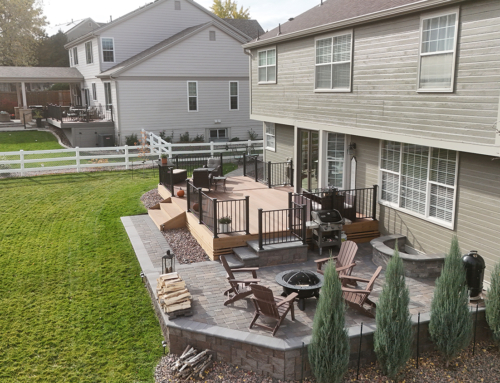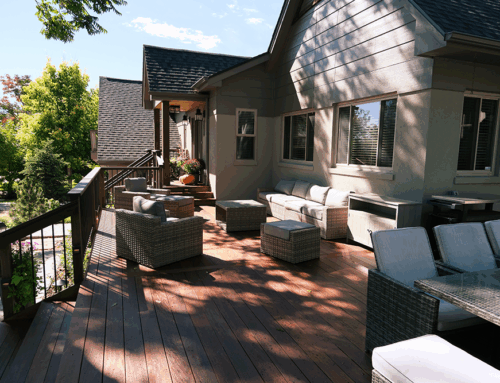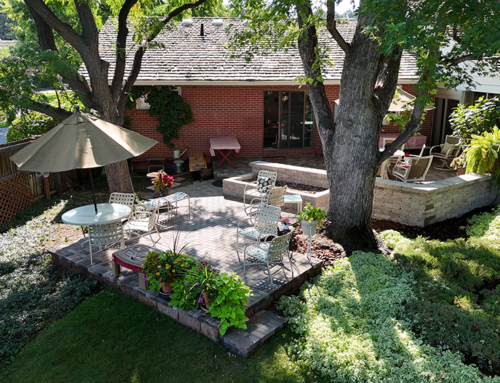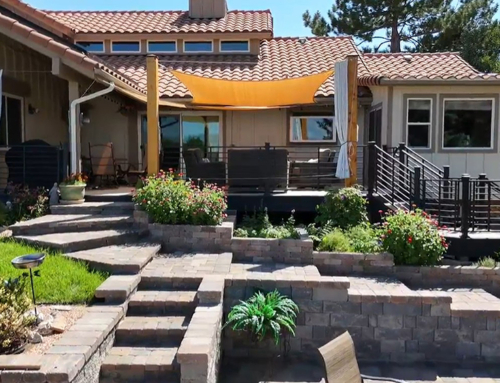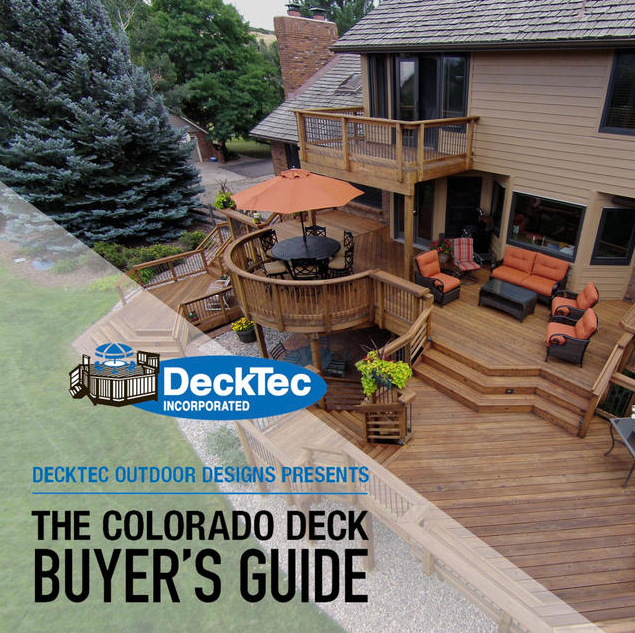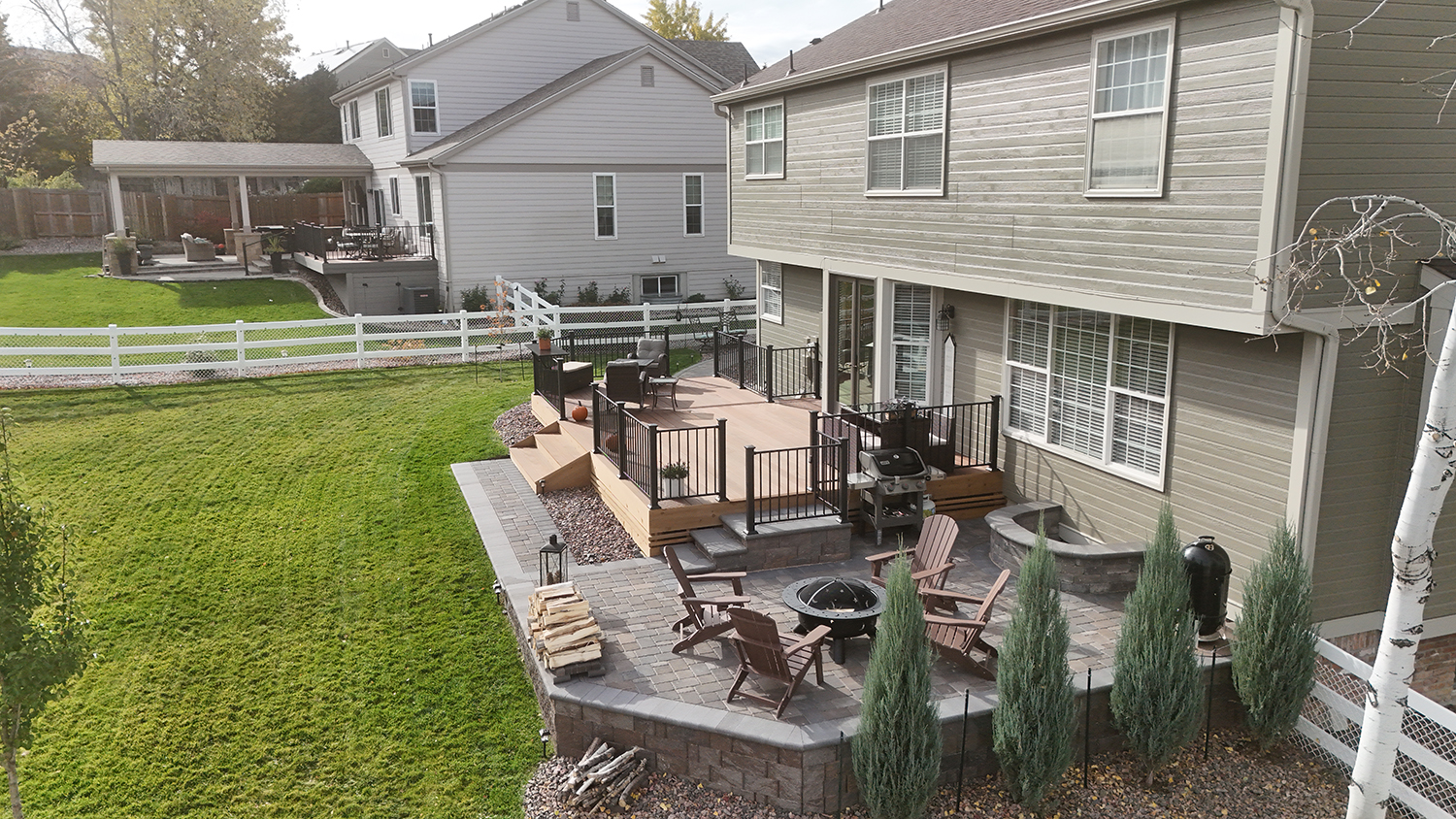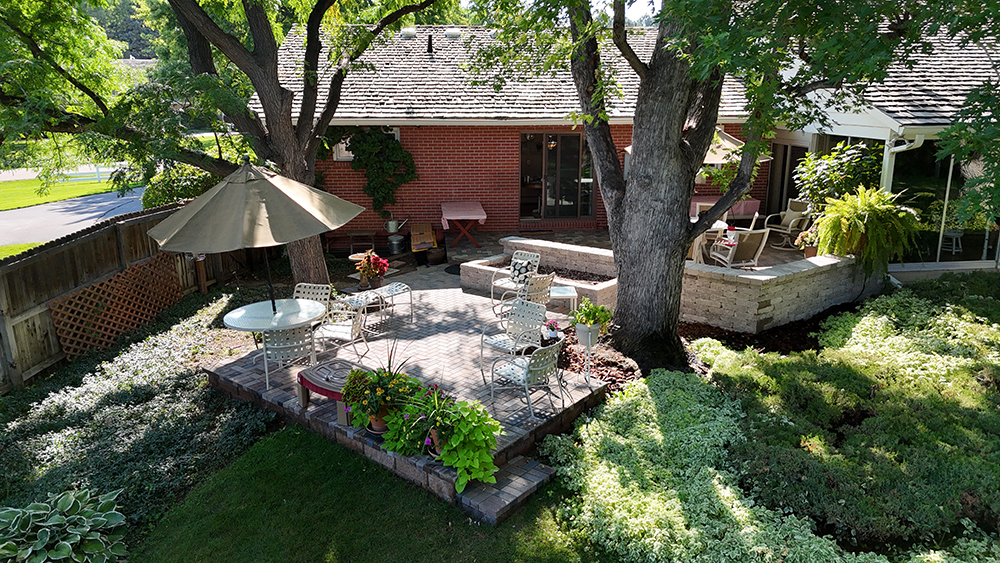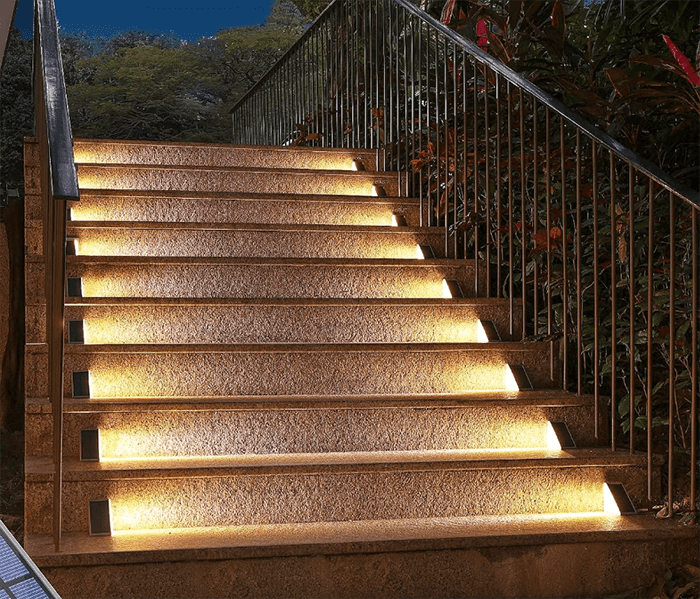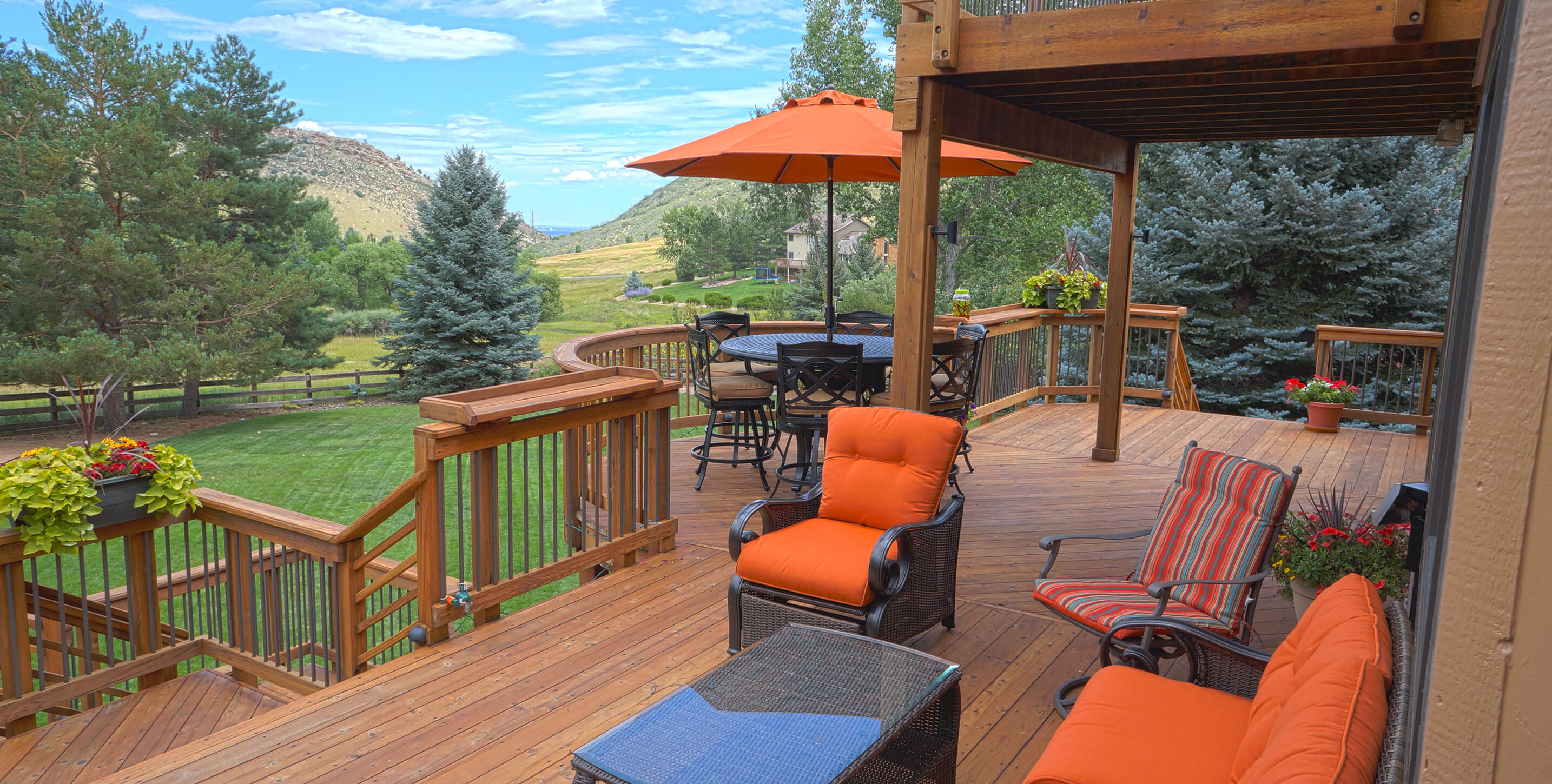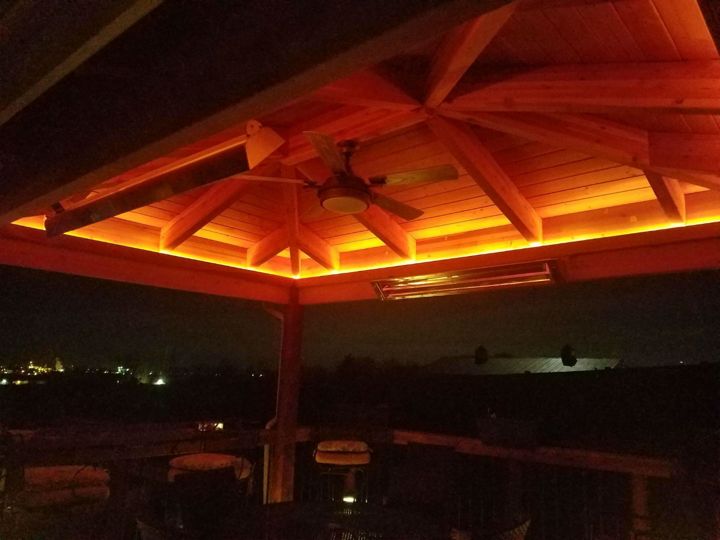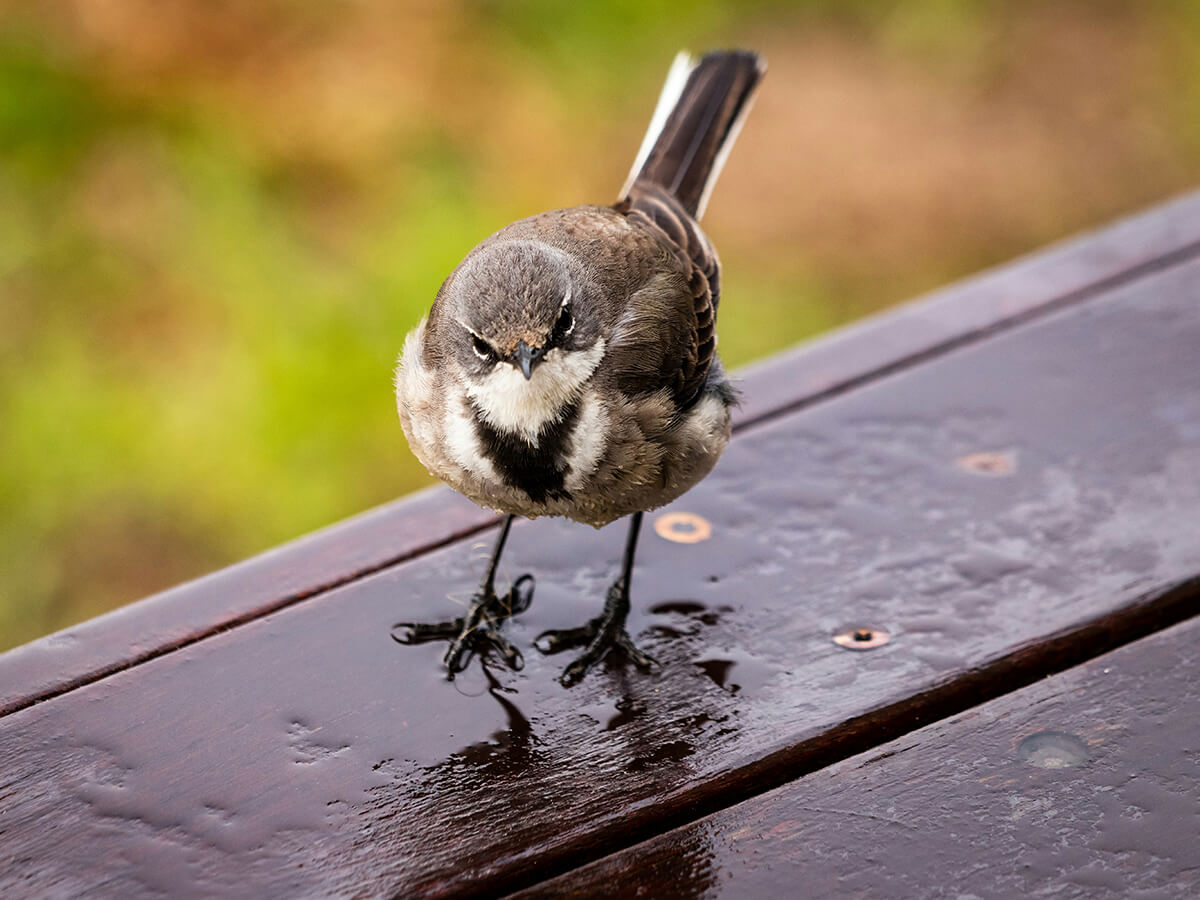
Birding on Deck: Bird Feeding
Welcome to our third in a series of articles about backyard birding “On Deck!” The first thing to know when it comes to feeding your backyard birds is that there are different types of feed and feeders for different types of birds. It can, unfortunately, be a bit overwhelming for the beginner, as there’s a [...]
Welcome to our third in a series of articles about backyard birding “On Deck!”
The first thing to know when it comes to feeding your backyard birds is that there are different types of feed and feeders for different types of birds.
It can, unfortunately, be a bit overwhelming for the beginner, as there’s a seemingly endless array of options and effects. There are “loose” feeders such tray, tube and house (or “hopper”) styles, suet or seed cylinders, bark butter pellets and tubs, and specialized feeders and food for birds such as hummingbirds, orioles and goldfinches.
There are various placements as well. Feeders can be hung “on deck” or from trees, on the top or side of deck railings, with or without extension arms, or mounted on poles. Some feeders are squirrel proof, and all tube feeders can be made squirrel and large-bird proof with an added cage.
Yup, there sure is a lot to know.
Fortunately, DeckTec spoke with birding expert Scott Menough, co-owner of Wild Birds Unlimited in Lakewood and host of BirdTalk radio on KNUS and KDMT, to help our DeckTec community make sense of it all.
Birdseed
To simplify things, Menough has created four custom Wild Birds Unlimited brand seed blends designed specifically for Colorado birds. For beginners, Menough recommends the “No Mess DP (diced peanuts)” blend in a loose tube, house or tray feeder. “No Mess DP” consists of sunflower chips (chopped sunflower seed kernels), small peanut pieces (high in fat and protein) and hulled millet. Chopping the kernels helps reduce germination if a seed goes to the ground.
Birds need high protein, high fat food, Menough said. When birds fly they burn off fat very quickly, while protein is needed for reproduction and molting. Most birds molt (change out their feathers) at least once a year, while some even do it twice annually.
“We call our four custom Colorado seed blends ‘No Mess’ because they don’t have any shells. They’re designed to feed birds on the feeder and under the feeder – some birds are ground feeders,” Menough said.
“Blends with shells are typically less expensive per bag but they’re ultimately more expensive for food value because you’re buying shells, you’re not buying 100 percent bird food. In fact, one bag of a good quality seed mix with shells equals 1.8 bags of our ‘No Mess’ blends,” Menough said. “Years ago I decided that my hobby was watching birds on the feeder and not cleaning up shells underneath the feeder.”
Shelled or not, beware of cheaper, low-quality birdseed blends.
“Some mixes, of course not here at Wild Birds Unlimited, include filler seeds that make the bag cheaper, but birds don’t eat those seeds. Instead, they throw the filler seeds to the ground where they can grow into weeds. Filler seeds to avoid include wheat, milo and oats, so be sure to read labels. Those seeds don’t cost as much as sunflower seeds, which 80-85 percent of seed-eating birds will eat and which are an excellent basis for blends, but because the birds don’t eat fillers in the long run it’s a much more expensive way to feed,” Menough said.
Menough’s three other “No Mess” blends are “LM (low millet), “NMCD (no millet, calcium, diced peanuts) and “No Mess Plus.” LM is good if you don’t have many ground-feeding birds or don’t want as many ground-feeding birds. Ground-feeding birds include sparrows, doves and juncos.
“So how it works is a house finch, for instance, will perch on a feeder and eat sunflower, but the finch may do something called ‘bill swiping,’ where they’ll pick through the millet and knock it out. The millet ends up in the tray on the feeder, where the ground-feeding birds will eat it,” Menough said.
“NMCD consists of sunflower, peanut and calcium, which helps build stronger eggs and bones. NMCD is great for feeding off the deck because without millet there’s no ground-feeding birds. ‘No Mess Plus’ is great for trays. It consists of sunflowers, chopped tree nuts, raisins, cranberries, suet pellets for insect-eating birds, and calcium,” Menough said.
Suet and Seed Cylinders
 Suet and compressed seed “cylinders” are some of the newest options at Wild Birds Unlimited. The seed cylinders are compressed with gelatin. The suet cylinders are intended for insect-eating birds such as chickadees, nuthatches, downy woodpeckers and bushtits, but a lot of insect-eating birds will also eat seeds, because nuts and seeds are high in fat. Suet gets more activity in the winter because there are lots of insects around in the summer. Seed always gets more activity because it appeals to a greater variety of birds, Menough said.
Suet and compressed seed “cylinders” are some of the newest options at Wild Birds Unlimited. The seed cylinders are compressed with gelatin. The suet cylinders are intended for insect-eating birds such as chickadees, nuthatches, downy woodpeckers and bushtits, but a lot of insect-eating birds will also eat seeds, because nuts and seeds are high in fat. Suet gets more activity in the winter because there are lots of insects around in the summer. Seed always gets more activity because it appeals to a greater variety of birds, Menough said.
“The great thing about cylinders is that birds will stick around longer. Typically, a chickadee, for example, will fly into a feeder, grab one seed, fly away to a tree branch, and then peck away at that one seed to eat it. Then the chickadee will come back for another seed, and so on. Chickadees are my favorite bird, but I would just catch glimpses of them. When I put these cylinder feeders out the chickadees would stay for 10-15 minutes, they wouldn’t fly off. I had so much fun watching them I had to get the video camera out,” Menough said.
Despite the advantages of cylinder feeders, it’s best to start off with a loose seed feeder.
“Of course, you could start with a seed cylinder, but I think more birds recognize a loose feeder with mixed seed in it. Birds find food by sight and they might avoid something that’s unusual. If you have something familiar at first, that will help the birds feel comfortable in your yard. Then you can introduce a cylinder feeder with greater success,” Menough said.
Bark Butter
Created by Jim Carpenter, founder of Wild Birds Unlimited, Jim’s Birdacious® Bark Butter® attracts 144 species, more than any other food. It consists of suet, peanut butter, and corn, and is available as pellets or in a tub. Menough recommends it over regular suet, and said that it holds up very well in the summer, better than a lot of the peanut butter mixes that folks make at home. Bark butter can be spread on a tree or on a Bark Butter feeder.
Specialized Feeders
Hummingbirds
In the metro area, these beautiful, magical birds usually show up at the end of the first week of April and stay until the end of September, sometimes later, depending on where you live. Bright red hummingbird feeders dispense the nectar that hummingbirds drink. In nature, hummingbirds get their nectar from flowers, and they also eat insects and spiders. If you happen to have a flower garden, you’re in luck!
Menough recommends the high perch saucer style hummingbird feeder, which allows you to see all the birds on the feeder instead of having them hidden behind a glass column of fluid.
To make a hummingbird nectar solution, combine one cup of table sugar with four cups of water. When it’s hot out you’ll need to change the solution every other day or it will spoil.
“When you put the nectar outside you get bacteria, yeast and mold spores that start growing. The solution gets cloudy and you could even have black mold growing in it if you leave it out for too long, or it could ferment, turning to alcohol,” Menough said.
“Hummingbirds are teetotalers, they don’t want to fly drunk,” he said.
If you’d rather not have to change the nectar out so frequently, Wild Birds Unlimited sells an additive, “Nectar Defender,” which keeps the nectar fresh for two to three weeks.
Goldfinches
The African yellow daisy, also known as niger (for Nigeria), nyjer thistle seed, is a favorite food of goldfinches. It’s been cultivated for human consumption in India and Ethiopia for more than a thousand years, and is now grown commercially in Africa, India, and southeast Asia. In 1998 the Wild Bird Feeding Industry, a trade association, trademarked the name Nyjer®. Backyard birders also call it thistle seed, even though it’s unrelated to thistle. Goldfinches like thistle seed and use thistle down to build nests, so that could be the source of the confusion.
“Nyjer seed is very attractive to goldfinches and you can offer it year-round in feeders that other birds have trouble eating from. A nyjer seed is a very tiny seed, smaller and elongated compared to a poppy seed,” Menough said.
However, a nyjer feeder is not something you’d want to put out by itself, Menough said, because you’re only attracting two species of birds, the American goldfinch and the lesser goldfinch. The lesser goldfinch is smaller and has less yellow, and it’s usually here a shorter portion of the year, usually summer. Lately, though, more of them are staying through the winter because of milder winters and because more people are feeding them.
“You’re more likely to be successful if you have other birds around whose activity tends to attract goldfinches. Not only are they using their sight to find food, they’re using their sight to find other birds, such as the ones that like the seed blends,” Menough said.
Orioles
Specific oriole feeders are also available.
“Orioles usually they like oranges, nectar solution, grape jelly and so we end up offering that to attract them,” Menough said.
Further Reading
Carpenter’s book, “The Joy of Bird Feeding: The Essential Guide to Attracting and Feeding Our Backyard Birds,” is a good starter book for learning more.
Share this article
Follow Our Story:
Easily Reach Us:
A quick overview of the topics covered in this article:
Latest articles
December 13, 2025
December 13, 2025
FEATURED IN
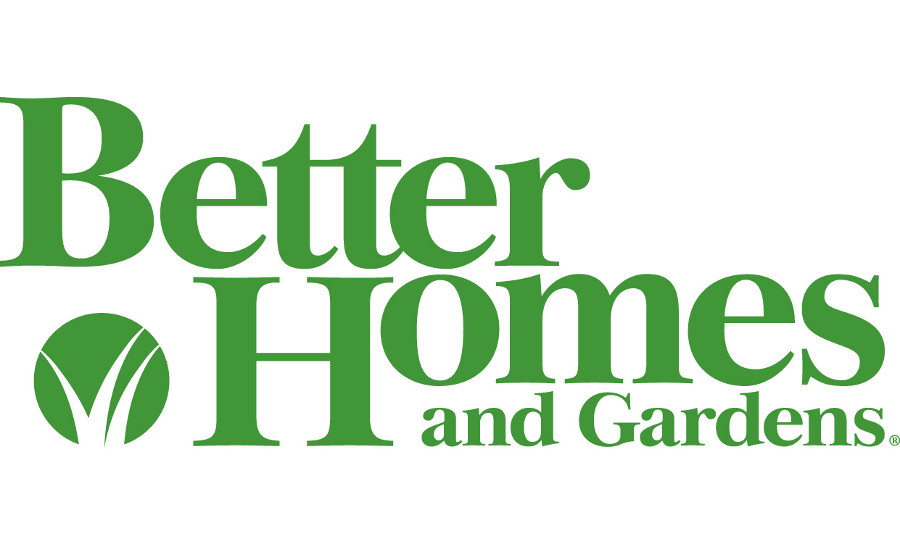

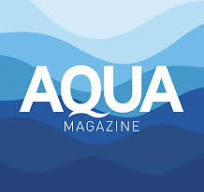



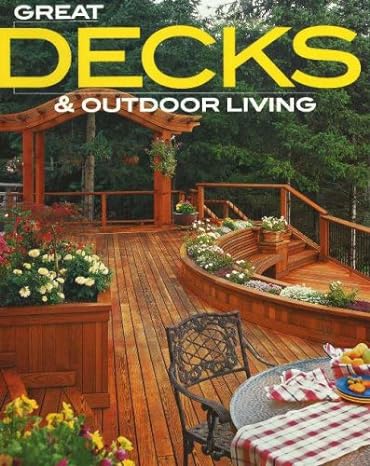

Real People
Real People
Work With You,
at Every Step
Work With You,
at Every Step
From planning to construction –
Our team has your back!
From planning to construction –
Our team has your back!

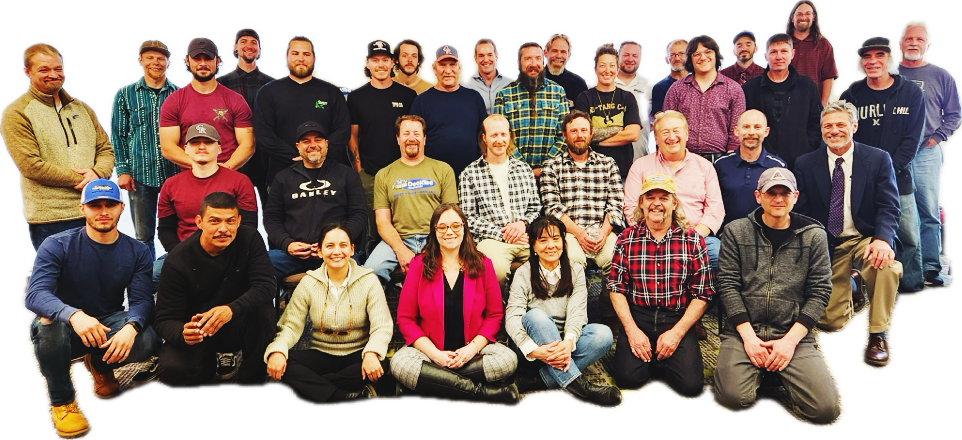
Get Started Today!
If the market value of your home is important to you – as it is for many – adding a custom deck can increase your house value.
If you’re considering adding a custom deck to your home, reach out to HFS Financial for all of your home improvement financing needs. HFS makes it easy to fund your project with minimal documentation requirements, no equity or appraisal needed, and direct-to-consumer funding.
Adding or improving an existing deck can add a number of beneficial features to your home. Not only can a new deck improve the value of your property, but it can also make your home more enjoyable for you and your family.
HFS Financial also offers 120% financing, allowing you some financial wiggle room for those unexpected hiccups that you may find along the way of your deck-building journey. All funds are paid directly to you, the consumer, so there’s no need to coordinate contractor work with payout schedules. Handle your project your way.
Once we’ve received your information through our 60-Second Loan Application, you will be notified of possible loan options quickly to discuss and review your loan terms and the home improvement project you have in mind.
My husband Matt and I [...] have moved away from the home where we had the beautiful deck and outdoor living space you created. We will forever remember fondly that beautiful deck, and the hard work you did during a very bad economic time to fix problems around the foundation of our home. Steve, Keith, and all of your workers were fabulous and we sent several of our friends your way with referrals. We are sure that your deck helped us get a wonderful offer on our home.
We just wanted to tell you how much we enjoy the decks DeckTec constructed at our home. Their use is a constant joy. We continually receive compliments on the design and quality of your work. We look forward to many years of use.
DeckTec are absolute pros. They just finished a big deck and roof cover project at my house. The total experience from working with Steve in Design and Sales, Keith in Project Management, and Charlie, Josh, and Hank in Construction was nothing but 6 star service. 100% on time and on budget with craftsmanship and quality. Skip the “Hammer and Nails” contractors and go with DeckTec if you want an “Outdoor Living Space”. Call these people – you will not be disappointed.
I just wanted to let you know how pleased I am with the work Decktec completed refinishing my deck. It hasn’t looked this good since it was new sixteen years ago. Decktec was very professional, polite and willing to work with me to get the exact color of stain I wanted. I would recommend Decktec to anyone who wants a complete job from the great construction work starting the job, to its thorough cleanup. I’m happy my neighbor referred me to Decktec. You are the fourth company I’ve had refinish my deck and will now be the only company I use going forward.

